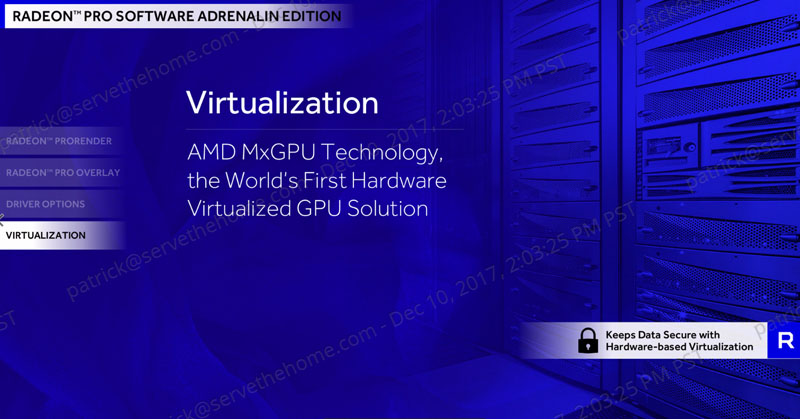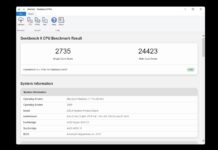Recently AMD briefed us on a number of updates in what it is calling the AMD Radeon Pro Adrenalin update. One of the most interesting for us came at the end of the discussion where AMD highlighted virtualization. Specifically, that the company is putting its KVM host driver on GitHub and open sourcing the effort.
AMD Radeon GIM Open Source KVM Host Driver
Every discussion with AMD about graphics virtualization touches on the fact that AMD has what it believes is a superior hardware GPU virtualization solution based on SR-IOV.

The heavy-hitting slide in the presentation was the GIM Open Source KVM host OS driver. GIM stands for Guest Interface Manager. The key here is that AMD is offering another component in the stack as open source. AMD’s approach to GPU virtualization is very different compared to NVIDIA where NVIDIA charges companies premiums both for hardware and then its GRID software.

We asked AMD about a feature like nvidia-docker which is an awesome tool for using GPUs with containers. AMD said they realize that containers are an important part of the ecosystem, but we did not get a timeline for a similar feature.
AMD Radeon Pro Software Adrenalin Edition
The first feature that the AMD Radeon team highlighted is that it will have quarterly driver updates in 2018. The updates will be on the second Wednesday of the second month of each quarter.

Beyond the driver update schedule, there are a number of new features that AMD is highlighting in the update mostly focusing on the Radeon ProRender feature.

A large market for the AMD Radeon professional series GPUs is professional rendering where vendor-specific enhancements can make a huge difference in workflows.

The slide is fairly self-explanatory, the big one here is that the AMD Radeon team is bringing macOS support for Autodesk Maya and Blender. This is doubly important with new Mac Pro’s using AMD graphics.

One of the key features is viewport denoising in Blender. The denoising feature is hard to see from this picture but it is the difference between the top and bottom portions of the image.

One of the cool features is that you can now import CAD drawings to game engines and render them for VR with Game Engine Importer. If you are modeling and want to see your creation in VR, this will simplify the workflow.

Final Words
Overall some big changes. We are very excited to see AMD heading in a different direction from NVIDIA on the virtualization side as that market needs increased competition. At the same time, we eagerly await an amd-docker functionality for containerized AMD GPU orchestration. We hope AMD comes out with this soon.





When will we see VMWare Horizon VDI support for AMD’s current-gen cards, or is there a better solution for GPU-accelerated Windows VDI? Or should I be looking at GPU-accelerated Linux VDI given AMD’s new KVM host driver?
I just want easier passthrough support for hypervisors like KVM